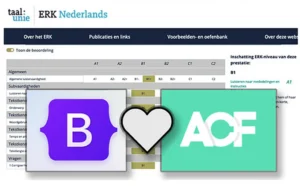If you’re still chasing vanity metrics like “ranking #1” for a broad keyword, you’re already falling behind. The future of SEO—especially in multilingual European markets—isn’t just about clicks. It’s about visibility, authority, and strategic presence.
Google is increasingly shifting toward zero-click results, especially featured snippets, because they want users to stay on their platform. And with AI-driven search features like Google SGE (Search Generative Experience) rolling out globally, the pressure to own SERP real estate without the click is real.
But here’s the opportunity: you don’t need every visitor to click. You need them to see that you’re the expert.
Why Google Favors Snippets in AI-Driven Search
Featured snippets (the “position zero” result) are Google’s way of summarizing the best answer right on the search page. These are especially valuable in AI-powered search where Google’s systems are:
Looking for structured, high-confidence answers
Favoring entities and brands with recognized authority
Trying to minimize bounce and keep users engaged on Google properties
By surfacing content directly in snippets, PAA boxes, and carousels, Google keeps users on their page longer—and gets better data to refine future AI responses.
Why This Matters for Your Brand (Even If They Don’t Click)
You might think a zero-click result is a lost opportunity. But it’s the opposite—it’s a branding win. If your content appears in a featured snippet:
You’re instantly framed as a trusted authority
Your brand name and voice become part of the user’s research journey
You gain visibility across countries and languages—even if your competitors are chasing traffic instead of trust
In multilingual Europe, where localized content is key, this means a well-translated, structured page in French, German, or Polish could dominate snippet space in each market.
Shift from Vanity SEO to Smart, Structured Strategy
Too many businesses still aim to “rank #1” for high-volume, generic terms. That mindset is outdated.
Modern SEO wins come from:
Targeting niche and high-intent search phrases
Creating FAQ content that anticipates user questions
Answering concisely and clearly to trigger snippet eligibility
Using active voice to show confidence and authority (e.g., “Use schema markup to…” vs. “Schema markup is often used…”)
Google rewards clear, helpful, structured content that sounds like it’s teaching or guiding. That’s why active voice works—because it reflects direct advice.
Why YouTube, TikTok, and Images Beat AI in the SERPs
AI can summarize text, but it can’t replicate original video, real-life demos, or visual trust signals. That’s why:
YouTube videos are increasingly featured in snippets and carousels
TikTok content can appear in Discover and mobile search
Images with proper alt-text and schema win attention in both classic and AI-powered search
These content types build entity recognition, helping Google associate your brand with specific topics or industries.
How to Structure Content for Featured Snippets
To maximize your chances of earning snippet placements (and staying relevant in AI search), structure every page for readability and scanability:
Use H1 for your main topic
Use H2s for supporting sections
Use H3s for subpoints or FAQs
Create bulleted lists or step-by-step instructions
Answer key questions in the first 100 words
Group related content into topical clusters so your site becomes an authority in a subject area—not just a random collection of blog posts.
Why FAQs Still Work (and Always Will)
Google loves FAQs because:
They’re naturally structured
They answer specific user questions
They’re easy to repurpose into snippets, voice search results, and PAA boxes
Create FAQs in every language you operate in—using local keyword variations and idioms—and you’ll build authority fast.
Final Word: Don’t Chase Clicks, Build Recognition
Zero-click SEO isn’t a threat—it’s your shortcut to trusted brand visibility. By optimizing for featured snippets, you ensure that users see your expertise, whether or not they click.
In a multilingual world where users skim, swipe, and ask their phones for answers, your job is simple:
👉 Structure clearly.
👉 Write actively.
👉 Answer helpfully.
👉 Think brand first, clicks second.




